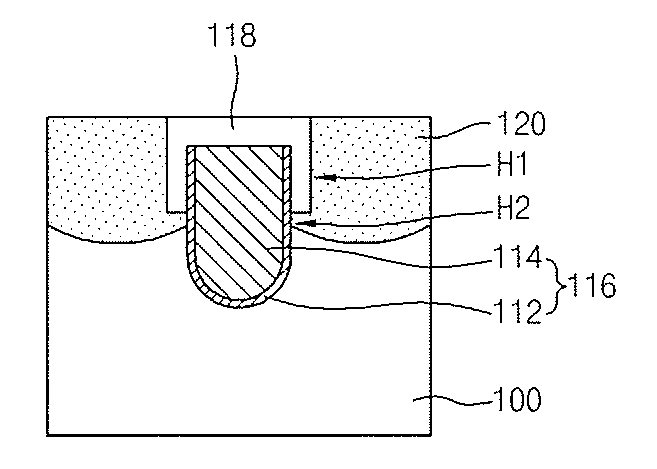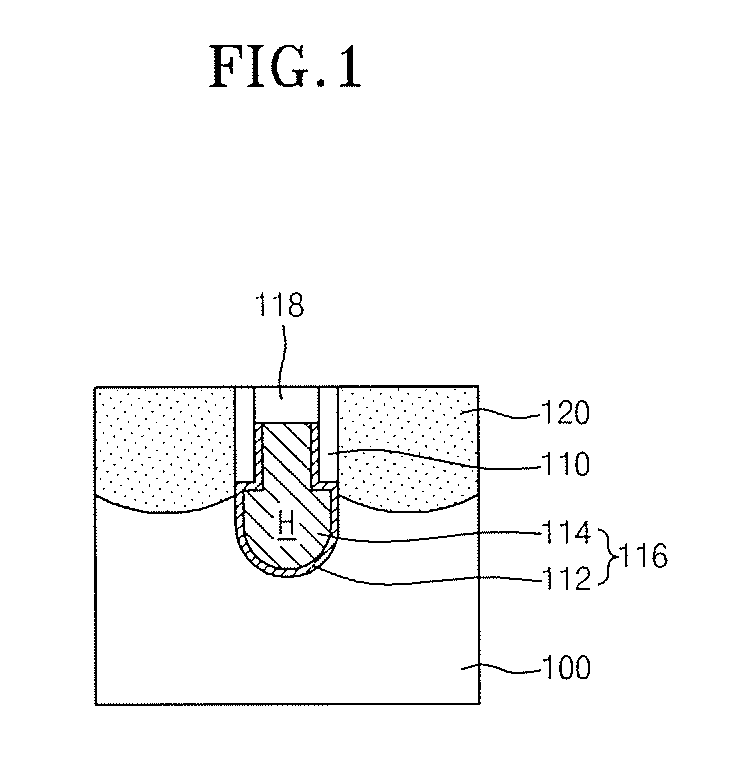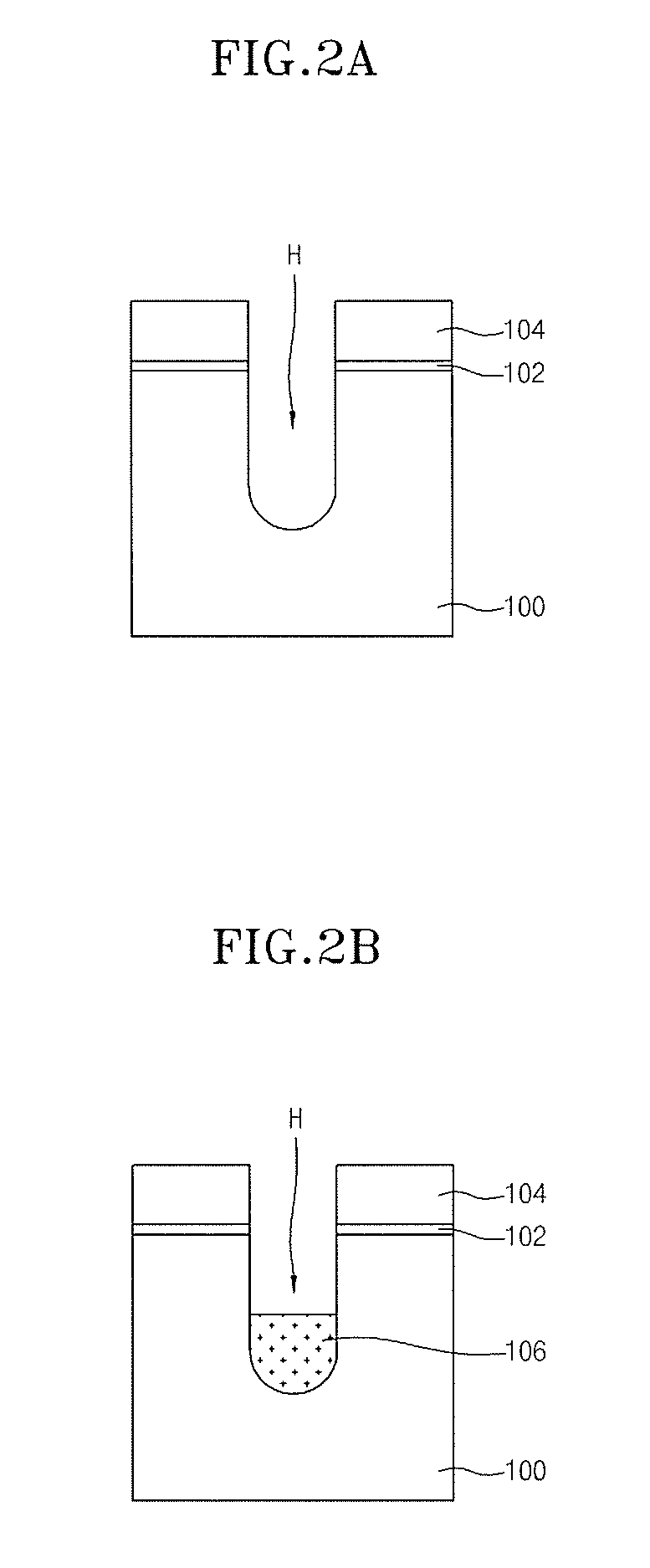Semiconductor device having a buried gate that can realize a reduction in gate-induced drain leakage (GIDL) and method for manufacturing the same
a semiconductor device and drain leakage technology, applied in the field of semiconductor devices, can solve the problems of increasing the junction leakage current, reducing the channel length of the highly integrated transistor, and becoming more and more difficult to achieve the appropriate threshold voltage needed in the highly integrated transistor semiconductor device, and achieving the effect of reducing the gidl
- Summary
- Abstract
- Description
- Claims
- Application Information
AI Technical Summary
Benefits of technology
Problems solved by technology
Method used
Image
Examples
first embodiment
[0035]FIG. 1 is a sectional view illustrating a semiconductor device in accordance with the present invention. A groove H is defined in a semiconductor substrate 100, and a buried gate 116 is formed in the lower portion of the groove H such that the lower portion of the buried gate 116 is wider than the upper portion of the buried gate 116. The buried gate 116 preferably comprises a metal-based layer, for example, the buried gate 116 may include a titanium nitride layer 112 formed on the surfaces of the lower portion of the groove H. A barrier layer 110 and a tungsten layer 114 may be formed on the titanium nitride layer 112 to fill in the lower portion of the groove H. The barrier layer 110 is formed along the sidewalls of the upper portion of the buried gate 116 and along the sidewalls of the upper portion of the groove H. The barrier layer 110 preferably comprises, for example, a nitride layer at a thickness of preferably about 50˜500 Å. A capping layer 118 comprising an oxide la...
second embodiment
[0039]FIGS. 2A through 2H are sectional views illustrating the processes of a method for manufacturing a semiconductor device in accordance with the present invention.
[0040]Referring now to FIG. 2A, after sequentially forming a pad oxide layer 102 and a pad nitride layer 104 on a semiconductor substrate 100, by subsequently patterning the pad nitride layer 104 and the pad oxide layer 102, a gate forming region of the semiconductor substrate 100 is exposed. Then, by etching the exposed region of the semiconductor substrate 100, a groove H for a gate is defined within the semiconductor substrate 100.
[0041]Referring to FIG. 2B, after forming a sacrificial layer 106 to fill the groove H, the surface of the sacrificial layer 106 is subsequently planarized. The sacrificial layer 106 is preferably formed as a layer which is more easily etched than the barrier. That is, the sacrificial layer 106 has an etching selectivity with respect to a material layer for the barrier. Accordingly, the sa...
third embodiment
[0054]FIGS. 3A through 3D are sectional views illustrating the processes of a method for manufacturing a semiconductor device in accordance with the present invention.
[0055]Referring to FIG. 3A, similarly to the above-described second embodiment of the present invention, after defining a groove H by etching a semiconductor substrate 100, a barrier layer 110 is formed on the sidewalls of the upper portion of the groove H. Then, a buried gate 116 is formed to fill the lower portion of the groove H. The buried gate 116 includes a gate insulation layer (not shown), a titanium nitride layer 112 and a tungsten layer 114 and the upper portion of the buried gate 116 is wider than the lower portion of the buried gate 116. Also shown are a pad oxide layer 102 and a pad nitride layer 104 on a semiconductor substrate 100.
[0056]Referring now to FIG. 3B, the barrier layer 110 is removed from the resultant semiconductor substrate 100 which is formed with the buried gate 116. At this time, when rem...
PUM
 Login to View More
Login to View More Abstract
Description
Claims
Application Information
 Login to View More
Login to View More - R&D
- Intellectual Property
- Life Sciences
- Materials
- Tech Scout
- Unparalleled Data Quality
- Higher Quality Content
- 60% Fewer Hallucinations
Browse by: Latest US Patents, China's latest patents, Technical Efficacy Thesaurus, Application Domain, Technology Topic, Popular Technical Reports.
© 2025 PatSnap. All rights reserved.Legal|Privacy policy|Modern Slavery Act Transparency Statement|Sitemap|About US| Contact US: help@patsnap.com



